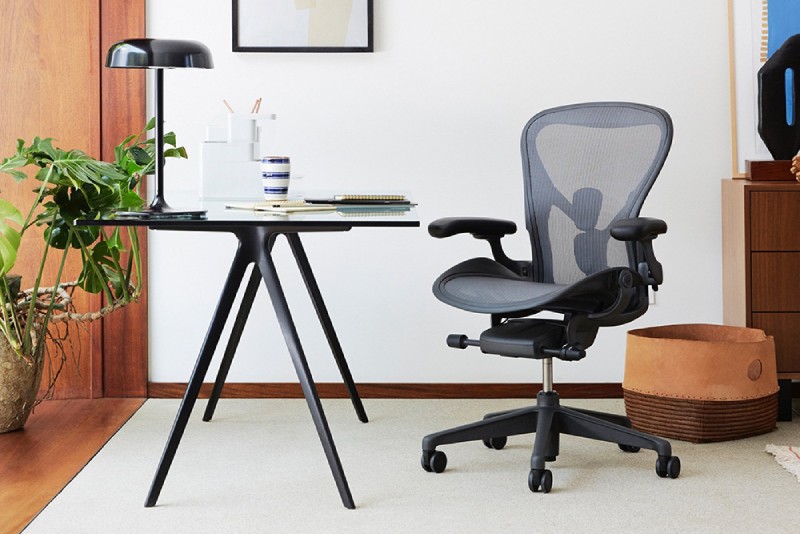Standing Desk vs Ergonomic chair: which is better?

In today’s fast-paced and technology-driven world, where sedentary lifestyles have become the norm, it’s crucial to prioritize our health and well-being. With the rise in awareness about the detrimental effects of sitting for prolonged periods, many people are seeking alternatives to traditional office setups. Two popular options that have gained significant attention are standing desks and ergonomic chairs. In this article, we will explore the benefits and drawbacks of each to help you determine which is better suited for your needs.
The Rise of Standing Desks:
Standing desks have gained immense popularity in recent years due to their potential health benefits. By allowing users to work while standing, these desks offer an alternative to sitting for extended periods. Here are some advantages associated with standing desks:
Improved Posture: Standing while working encourages a more upright posture, reducing strain on the neck, shoulders, and back. Maintaining proper alignment can prevent long-term musculoskeletal issues and promote overall spinal health.
Increased Calorie Burn: Standing burns more calories than sitting, contributing to weight management and overall fitness. While the difference in calorie expenditure is not significant, standing for a few hours a day can help boost metabolism and contribute to a more active lifestyle.
Enhanced Energy and Focus: Many users report feeling more energized and focused when using a stand up desk, potentially leading to increased productivity. Standing promotes blood circulation, delivering oxygen and nutrients to the brain, which can enhance cognitive function and alertness.
Reduced Risk of Chronic Diseases: Studies suggest that standing desks may help lower the risk of obesity, heart disease, and type 2 diabetes. Sedentary behavior has been linked to various health issues, and incorporating periods of standing can be a step toward a healthier lifestyle.
Despite these benefits, standing desks may not be suitable for everyone. Prolonged standing can cause discomfort, fatigue, and lower limb issues. It’s essential to find the right balance by incorporating periods of sitting and standing throughout the day.
The Appeal of Ergonomic Chairs:
Ergonomic chairs are specifically designed to provide comfort and support, promoting proper posture and reducing the risk of musculoskeletal disorders. Let’s explore the advantages of ergonomic chairs:
Optimal Support: Ergonomic chairs are designed to provide adjustable lumbar support, armrests, and seat height, ensuring that users maintain a healthy sitting position. These features allow for customization based on individual body dimensions and personal preferences.
Reduced Risk of Back Pain: By offering proper spinal alignment and support, ergonomic chairs can help alleviate and prevent back pain, a common issue among office workers. The adjustable features ensure that the chair fits the natural curvature of the spine, minimizing strain on the back muscles.
Increased Comfort: Ergonomic chairs are designed with padded seats and breathable materials, ensuring comfort throughout long work hours. The cushioning and breathable fabrics help reduce pressure points and maintain a cool and comfortable seating experience.
Customization Options: These chairs can be personalized to fit individual needs, ensuring maximum comfort and support for each user. The ability to adjust the chair’s height, backrest angle, and armrest position allows for a tailored seating experience.
While ergonomic chairs offer numerous benefits, they still require regular breaks and movement to counteract the negative effects of prolonged sitting.
Finding the Right Balance:
When it comes to deciding between a standing desk and an ergonomic office chair, it’s important to consider your specific needs, work environment, and personal preferences. Here are some factors to consider:
Work Tasks: If your work involves a lot of physical movement or if you require frequent access to different areas of your workspace, a standing desk might be more suitable. On the other hand, tasks that require intense focus or fine motor skills may be better suited for an ergonomic chair.
Physical Health: If you already experience discomfort or pain from prolonged sitting, an ergonomic chair might be the best option to provide the necessary support and alleviate symptoms. However, if you’re generally in good health and looking for a way to incorporate more movement into your day, a standing desk might be more beneficial.
Workspace Flexibility: Consider the flexibility and adjustability of your workspace. Some individuals opt for height-adjustable desks, which allow them to switch between sitting and standing positions effortlessly. This provides the best of both worlds, allowing for movement and ergonomic support.
Both standing desks and ergonomic chairs offer unique advantages and considerations. There is no one-size-fits-all solution, and the decision ultimately depends on individual needs, preferences, and work requirements. The key is to find a balance that promotes a healthy and productive work environment. Remember, regardless of your choice, it’s essential to incorporate regular breaks, movement, and proper posture to optimize your overall well-being.
By understanding the benefits and drawbacks of standing desks and ergonomic chairs, you can make an informed decision to create a workspace that supports your health, productivity, and overall well-being. Whether you choose to stand, sit, or a combination of both, prioritizing your physical health while working is crucial in today’s sedentary world.